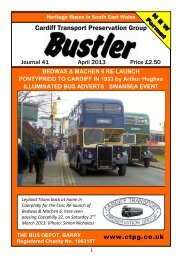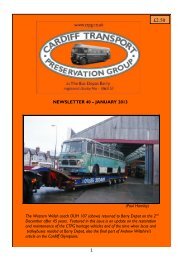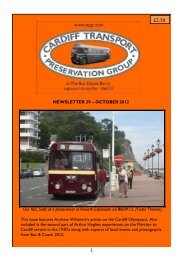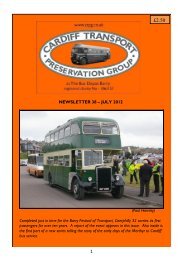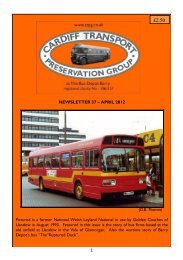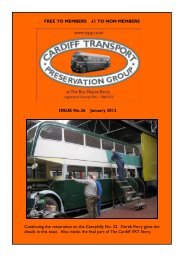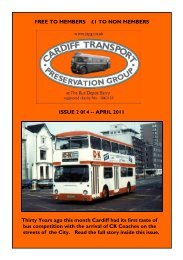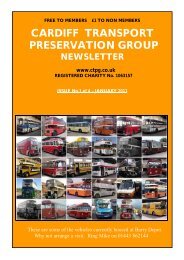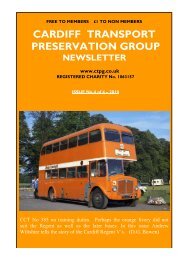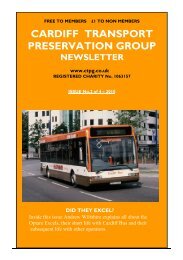Create successful ePaper yourself
Turn your PDF publications into a flip-book with our unique Google optimized e-Paper software.
The first into service was UH 7175 in November 1929. This had a 6<br />
cylinder overhead camshaft petrol engine and a lowbridge 48 seat Leyland<br />
body. This was on loan until purchased by C.C.T. in April 1931. It was<br />
fitted with an oil engine in 1935.<br />
Leyland TD1 UH 7175 (66) with original Leyland lowbridge body (C.J. Taylor)<br />
Leyland Motors opened a service depot in North Road, Cardiff in about<br />
June 1932 and it is likely that the company encouraged C.C.T. to take<br />
another demonstrator. TF6821 (new in 1931) had been on<br />
demonstration with Hull Corporation from Nov. 1931 to May 1932 and<br />
was another example <strong>of</strong> Leyland lowbridge bodywork. When returned<br />
to Leyland it was converted to oil with an early example <strong>of</strong> the 8.1 litre<br />
unit. This type <strong>of</strong> engine lacked power and was later replaced by an 8.6<br />
unit.<br />
TF6821 went into service in the city on 16 th December 1932 and was on<br />
loan until purchased in 1934. This was the second oil bus in the fleet as<br />
Cardiff already had in service an oil engine AEC Regent since the previous<br />
July. The Leyland proved to be economical costing 0.43d per mile<br />
against the petrol bus 2.39d per mile.<br />
Both TD1’s gave good service until withdrawal in 1945. Both were<br />
purchased by Southern Vectis that year as their No’s 709/708 (UH/TF).<br />
18




